Planting stethoscope, features of care and methods of reproduction
A perennial representative of the Astrov family, the bush (Evpatorium) is a herbaceous shrub, the height of which reaches 2 m. It is distinguished by its unpretentiousness and endurance, planting it in open ground is simple, minimal maintenance is required. Novice gardeners willingly plant an unassuming, spectacular perennial to decorate flower beds. A rather strange name was given to the bone marrow for its external resemblance to the wilderness, a male hemp plant. V.I.Dal gives a second, more beautiful name for a flower - horse mane.
Types of stethoscope
Botanists have about 600 species of Eupatorium, differing in the shape and planting of leaves, their color - from rich green to purple-violet tones. Small fragrant flowers of white, cream, purple or lilac color form an openwork inflorescence basket.
Let's get acquainted with the popular types of stethoscope.
P. purple
A fairly compact plant, up to 1.5 m tall, does not require a garter. During the flowering period, it is surprisingly similar to a lilac bush. The leaves are large, rich green, slightly pubescent. Smooth bluish green stem. The flowers are painted in pale pink and purple tones. Flowering begins in July, lasts 4-5 weeks.
A frost-resistant species, on the basis of which compact varieties Little Red and Little Joe were bred - about a meter high, lush dense inflorescences, rich burgundy and pink flowers, respectively. Domestic varieties of purple rosebone are perfectly adapted to the Russian climate.
P. spotted
Tall (up to 180 cm) rough shrub. Interesting is the uneven coloration of the stems - pink spots on a green background, which gave the name to the species. The foliage is large, green, in some varieties with a blue-gray tint. The inflorescences are large, loose, of various colors.
Common varieties of spotted sapwood:
- Atropurpureum - fascinates with bright pink flower shields crowning a 2-meter deep red stem;
- Riesenschirm - large pink inflorescences are located on dark, almost black stems about 180 cm high;
- Gateway - graceful bush, up to 1.5 m, large inflorescences, painted in shades of purple;
- Bartered bride - a real giant, growing up to 2.5 m tall, small flowers of pure white color;
- Purle bush - burgundy stems are completed with pale pink flower baskets.
P. wrinkled
Differs in serrated leaves and dark brown stems. Height up to one and a half meters, the beginning of flowering - the second half of August, continues until October.
Gardeners prefer varieties:
- Braunlaub - shrub, stems, buds and young leaves of which are colored brown;
- Chocolate - small white or pale cream flowers perfectly emphasize the beauty of bronze-violet leaves, frost-resistant.
The tall variety Chocolate requires a garter.
P. hemp
A species, some varieties of which barely reach a height of 50 cm. The stems can be not only straight, but also branched. He loves damp places - the banks of rivers and reservoirs, swampy lowlands. Finger leaves, sitting on short petioles, give a special decorative effect. It blooms from the middle of summer with silvery-pink flowers collected in baskets.
Common varieties:
- Flore pleno - the stems are high, about one and a half meters, the inflorescences are lush, terry;
- Variegata - especially interesting in rich green color of leaves with a pronounced white border, inflorescences are bright pink, stem height up to 75 cm;
- Album - a giant among the representatives of the species, height about 2.5 m, flowers with pale white.
Planting rules for stethoscope
You can grow Evpatorium on your site from purchased planting material or prepared yourself. Most often, the first bushes of a spectacular plant are purchased in stores or nurseries. It is important to choose a healthy plant.
Specialized trade presents two options for planting material (except for seeds) - rhizome cuttings or seedlings.
The standard packaging of root pieces is a transparent film through which you can properly examine the product. Quality criteria:
- Elasticity of the roots;
- Young buds are clearly visible on spring roots;
- Complete absence of a sign of rot, mold, traces of "work" of insect pests.
The seedlings should be placed in pots or containers. The state of the seedlings is assessed by their appearance:
- Leaves are not drooping, elastic, without signs of drying;
- The earthen ball is not compressed, slightly damp;
- The root system is completely covered with the substrate.
Seat selection
It is believed that the optimal location for planting of the steep is open, well-lit areas. The plant tolerates partial shading well without compromising its decorative qualities. Completely shaded places are not suitable - bloom will not come without the sun.
In general, not picky about the soil, Evpatorium grows and develops best on light fertile loams. Sandstones do not fit categorically, because they do not hold moisture. Sandy loam and clay require preliminary preparation, without which the development of the steep slope slows down. Poor soils are ennobled with compost, humus, etc.
If possible, a moisture-loving plant is planted in lowlands or in areas with a close occurrence of groundwater, so as not to tire yourself with watering.
Landing technology
Before planting, the site is dug up, large stones are removed, if necessary, ennoble additives are added, and drainage is arranged.
The optimal timing for planting vegetative material is spring.
The size of the planting holes is determined by the size of the seedling earthen clod. When planting pieces of rhizomes, they are freed from the old soil, deepened by 5 cm.
The distance between the bushes is maintained at least 70 cm.
After planting, the soil is compacted and watered abundantly. Experienced gardeners recommend mulching the soil with sawdust to retain moisture, and also so that weeds do not interfere with the development of young plants.
Bone meal, ash, humus (1: 3: 6) are added to the planting holes for seedlings to accelerate the survival rate of seedlings, which are more capricious than root cuttings.
Skeleton care
An unpretentious plant needs regular care, generally not burdensome, associated with the peculiarities of the natural habitat conditions.
The soil is loosened, weeds are removed, the mulch is renewed.
Watered quite often - Evpatorium refers to plants for which excess moisture is the best growth stimulus. A properly prepared landing site (equipped drainage) excludes the possibility of overflow.
Top dressing is needed to maintain a spectacular look. Mineral fertilizers - Kemira-Lux, Zdraven or nitroammofosku are applied twice a season: in early spring and during the budding period. In the interval between minerals, around mid-June, they are fed with organic matter - humus or compost.
Pre-winter preparation consists in shortening the stems to 10-15 cm. Additional insulation is required only for young plants, spruce branches or agrofibre are used for this.
In the spring, they are in no hurry to take off the shelter, because the kidneys awaken only with the onset of stable heat - in the second half of May.
Bone sap, with proper care, regularly "shoots" young shoots. To make the flowering brighter and more abundant, thin weak shoots are cut out. Often, to prevent self-seeding, faded stems are also removed, although they do not deteriorate decorativeness, acquiring silvery shades.
The garter is needed for tall (from 1 m) varieties, especially those growing in open, blown areas. The task is greatly simplified if you plant Evpatorium along walls and fences.
Diseases and pests
An exceptionally hardy plant is rarely affected by disease. When there are signs of damage to powdery mildew, the steep is treated with fungicides.
Pests also do not pose a danger to flowers. An exception is the mining fly, whose larvae gnaw through the passages in the body of the leaves. Usually limited to the removal of leaves in which the pest has settled. If the pest is widespread in the nearby territory, the plantings are treated with insecticides of contact-intestinal action - "Aktara", "Vertimek", or during the spring soil treatment, "Zemlin", "Thunder-2" are applied.
Reproduction methods
Like all perennial plants, the steep is propagated by seeds, cuttings, dividing the bush.
- Sowing seeds
Plants grown from seeds will begin to bloom in the third year.
Seeds are sown in seedling containers in March. They are scattered over the surface of the substrate, sprinkled a little, lightly pressed with palms and moistened. Then the container is tightened with foil or covered with glass.
It is advisable to stratify self-collected seeds for 30-35 days, and stand in a solution of potassium permanganate before sowing.
Seedling boxes from sowing are placed on a well-lit, warm windowsill. The film is removed daily for ventilation, moistened as needed. Seedlings appear in 2-3 weeks, the film is removed.
Seedlings dive in separate pots at the stage of 4-5 leaves.
Seedlings are planted on flower beds with the onset of the final heat, in late May - early June.
In the fall, you can sow seeds directly, directly into the open ground on prepared beds. True, not all seeds will sprout, but the plants will be stronger, more tenacious.
- Dividing the bush
The procedure is carried out with plants that have reached 5 years of age. The optimal time is the beginning of spring, when the phase of active growth is approaching. Such divisions take root faster and better.
To cut the division, the bush is dug out, shaken off the ground and the rhizome is divided into parts with a sharp sterilized tool, leaving at least 3 dormant buds on each. Pieces of root are immediately planted in prepared holes and watered abundantly.
- Cuttings
Cuttings are cut in the second half of June so that each has 3 buds. Rooting is carried out in a greenhouse, greenhouse or in a shaded place "under a hood". Throughout the entire period (until the end of August), ensure that the soil is constantly wet. Cuttings are planted in the designated places in the last week of August.
For the stethosis, reproduction by the buds of renewal is possible. To do this, in the spring, shoots that have grown by 5-7 cm are cut "with a heel" - a piece of root at the very base of the bush. Shoots are rooted in separate pots with shading in the first two weeks. A month later, new plants are planted in flower beds.
No matter how young Evpatoriums are grown, they must be insulated for the winter.
Oddly enough, the highly decorative bush, an excellent honey plant with healing properties, is still rarely found in the garden plots of Russia, and seeds are not often on sale. Those who are fortunate enough to purchase planting material do not regret the material costs at all: planting that does not require special knowledge, regular, but not burdensome care are rewarded with a charming decoration of the site - a flowering birch tree.
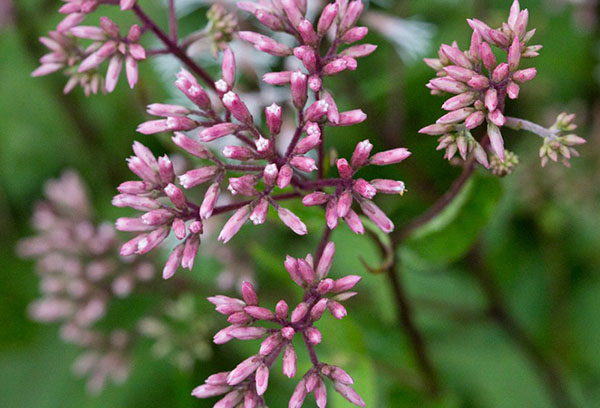
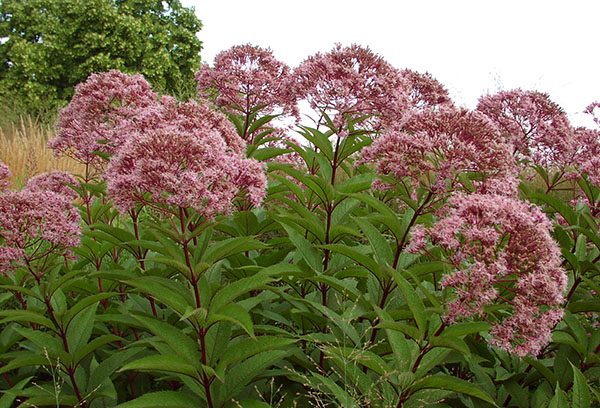
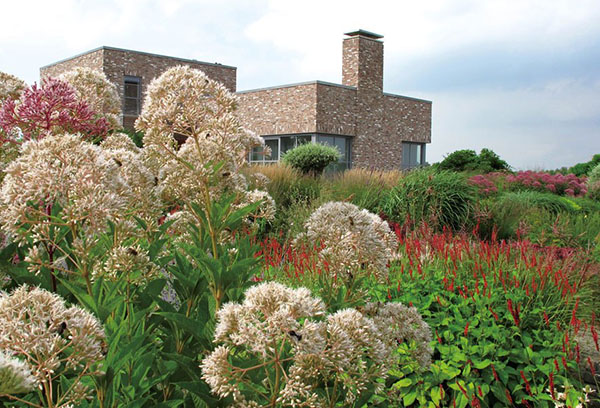
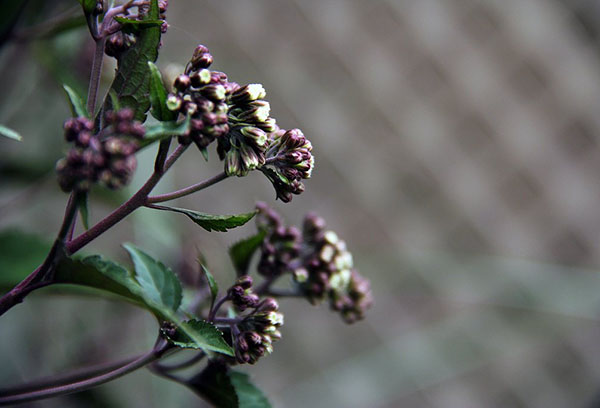
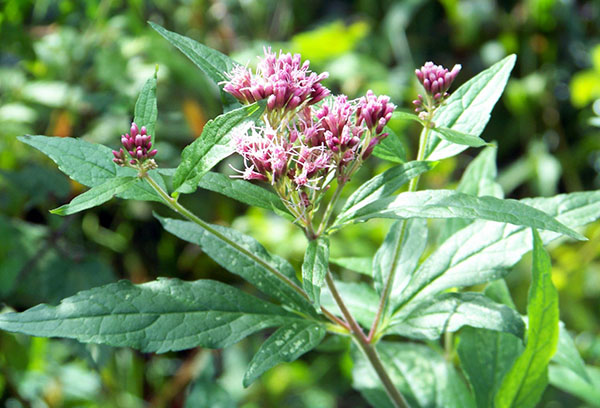


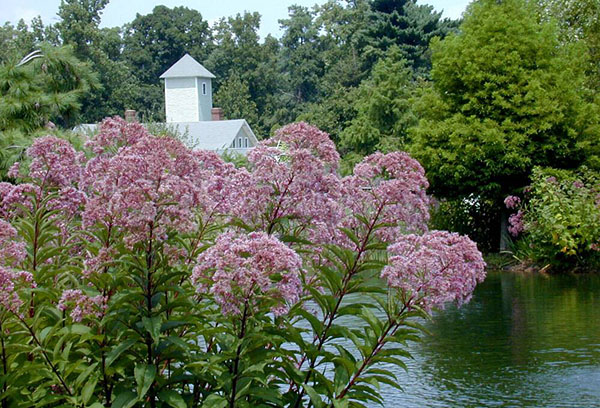
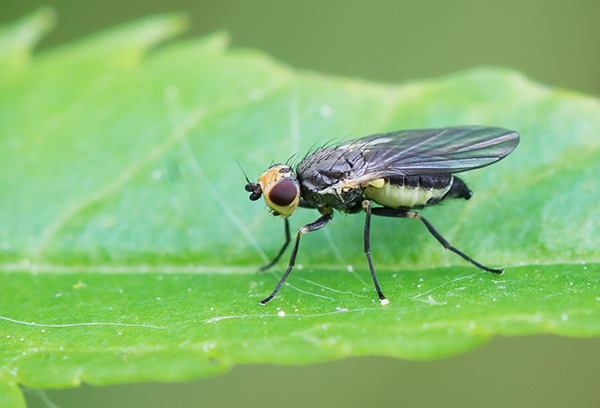
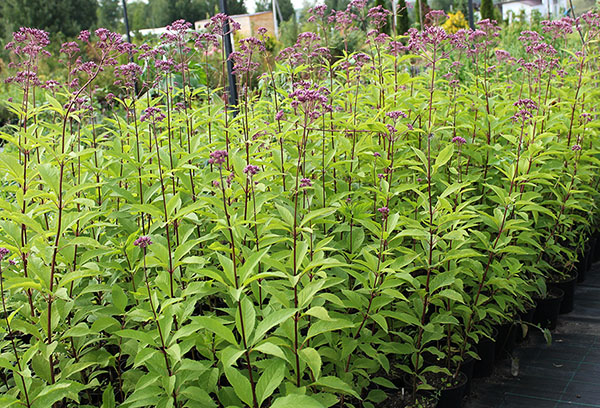


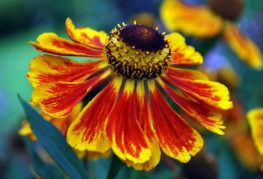
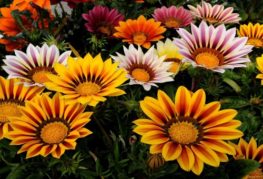

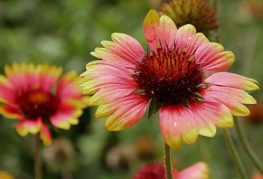
and will be published shortly.